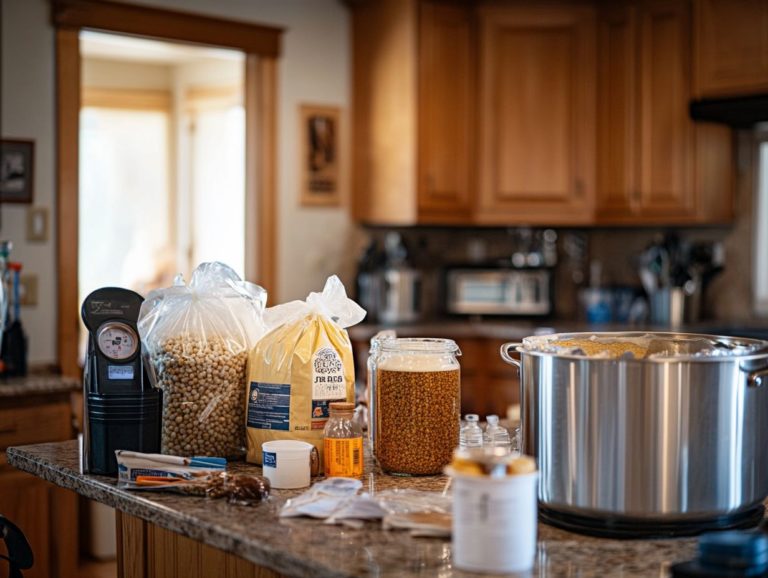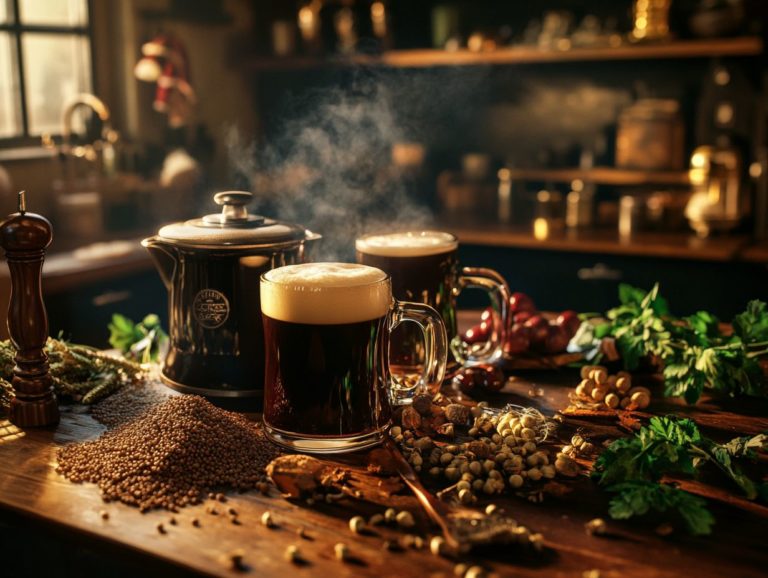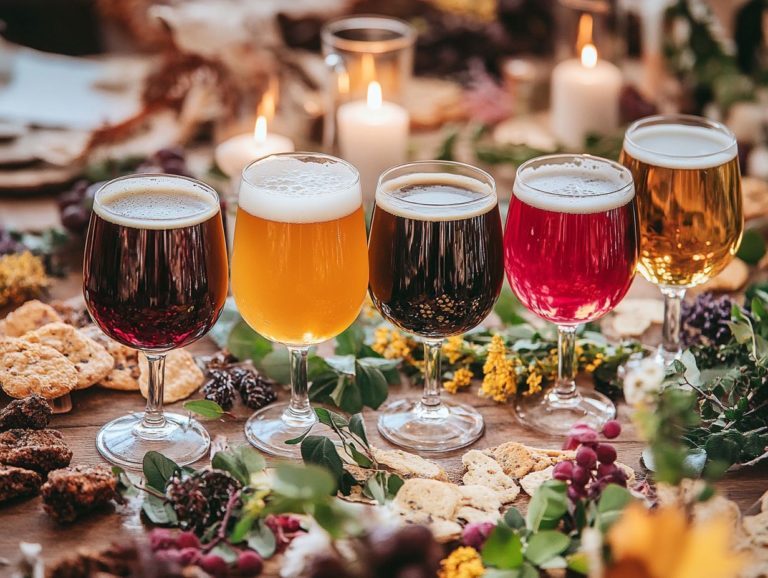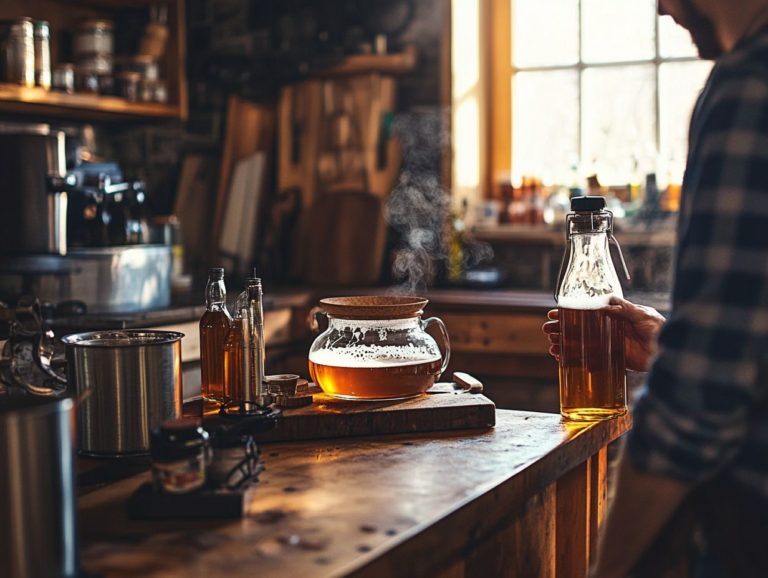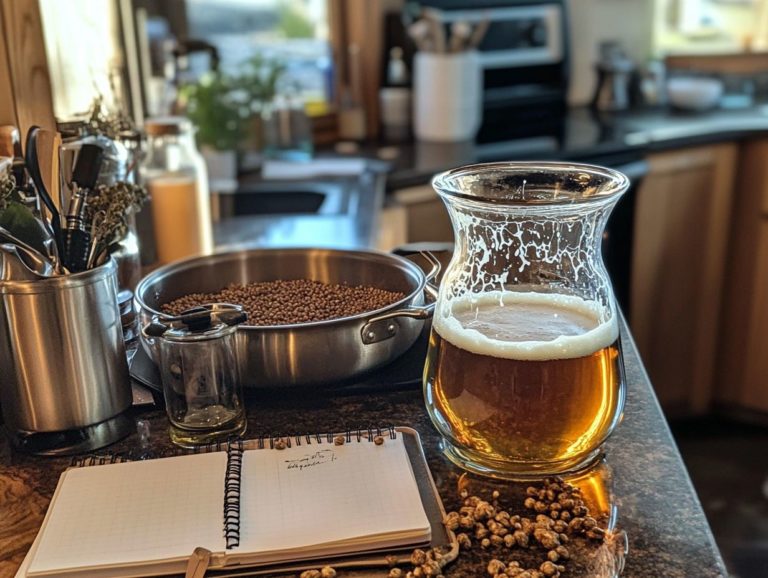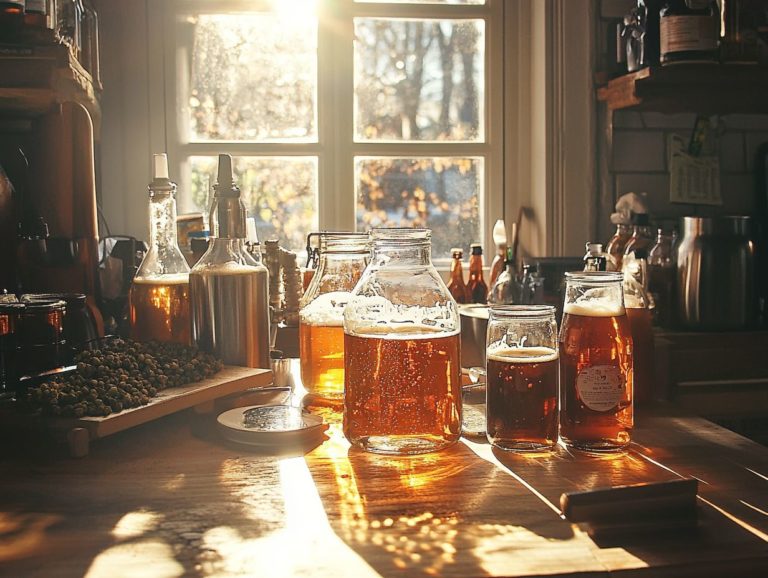How to Adjust Beer Recipes for Different Yeasts
Dive into the essential beer ingredients of homebrew recipes and kickstart your brewing adventure!
At the core of this craft is yeast a tiny organism that plays a monumental role in transforming simple ingredients into the rich flavors and aromas you hold dear. It influences your brewing style and beer fermentation process.
You ll delve into the various types of yeast used in brewing. Learn how to select the right strain for your specific recipe and discover the adjustments necessary to enhance your beer s profile.
Embrace the fascinating world of yeast and uncover the secrets to elevating your brewing game! Whether you re exploring yeast management for ales or lagers, the nuances you discover will enhance both your brewing science and art.
Contents
- Key Takeaways:
- How to Choose the Right Yeast for Your Beer Recipe?
- How to Adjust Your Beer Recipe for Different Yeasts and Yeast Management?
- Tips for Successfully Adjusting Beer Recipes for Different Yeasts
- What Are Some Common Mistakes to Avoid When Adjusting Beer Recipes for Different Yeasts?
- How Can You Experiment with Different Yeasts to Create Unique Beer Recipes?
- Frequently Asked Questions
- What is the importance of adjusting beer recipes for different yeasts?
- How do I know when to adjust a beer recipe for a specific yeast?
- Can I use any type of yeast for any beer recipe?
- How do I adjust a recipe for a yeast with different fermentation characteristics?
- Can I adjust a beer recipe for a wild yeast or bacteria strain?
- Is there a general rule for adjusting beer recipes for different yeasts?
Key Takeaways:
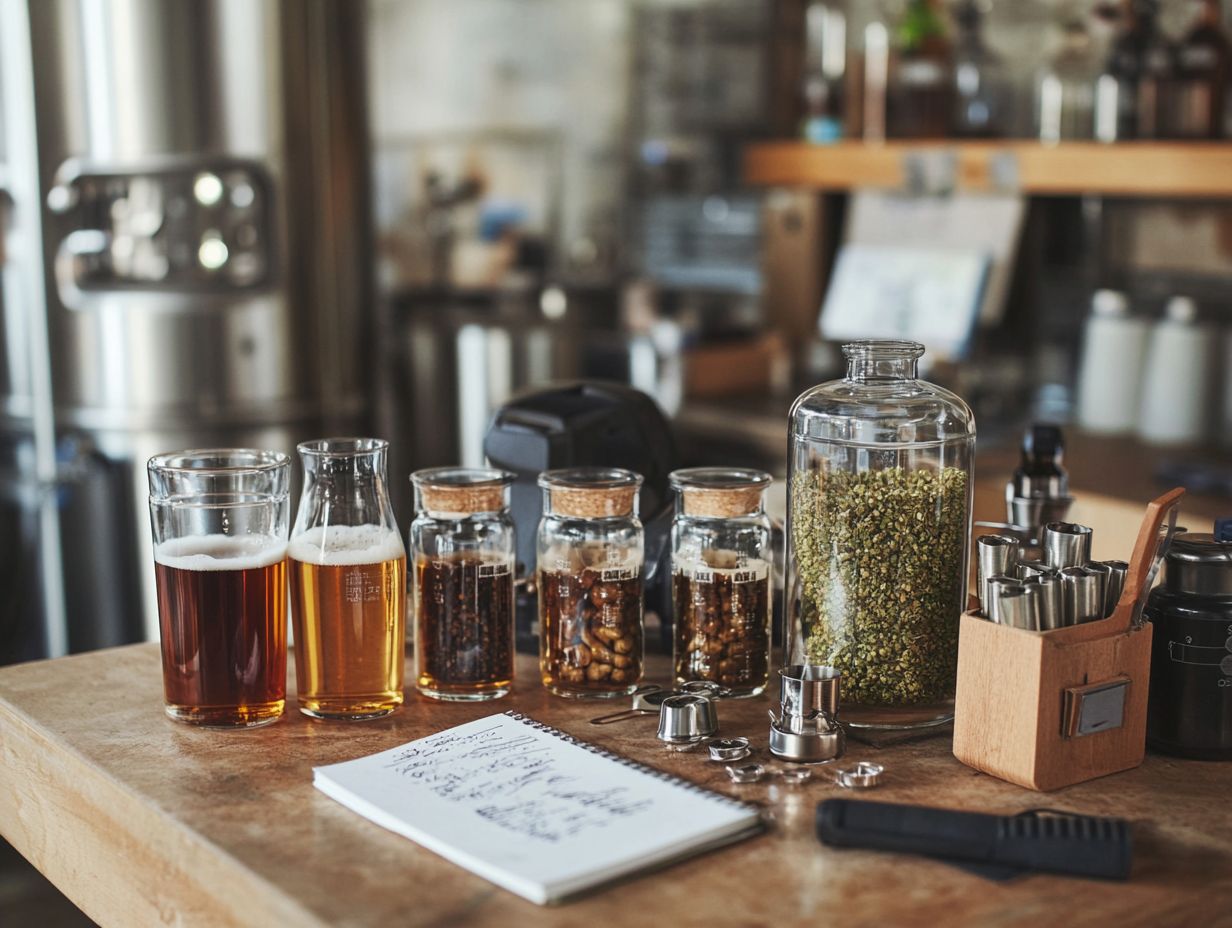
- Choose the right yeast for your beer recipe by considering factors such as style, fermentation temperature, and desired flavor profile. Brewing ratios and ingredient selection play crucial roles.
- Adjust your beer recipe for different yeasts by making changes to fermentation time, temperature, and ingredients such as hops and malt.
- Experiment with different yeasts to create unique and distinct flavors in your beer. Be mindful of common mistakes such as using incompatible yeasts and not properly controlling fermentation conditions. Keep an eye on brewing efficiency and yeast nutrient levels to ensure a successful fermentation.
What Are the Basic Beer Ingredients in Homebrew Recipes?
The foundation of any exceptional beer begins with its essential ingredients. These elements shape countless homebrew recipes and every distinctive brew you might encounter.
Typically, a well-crafted beer harmoniously blends a precise malt bill, an array of hop varieties, and carefully chosen yeast strains. All are tailored to reach a certain level of sugar concentration and flavor profiles. Utilizing brewing software like BeerSmith can aid in refining these parameters.
Grasping the intricate relationships among these ingredients is pivotal for mastering the brewing process. This journey also requires you to monitor wort gravity, adjust bitterness levels, and attain that perfect beer color. Proper yeast nutrient additions are essential for sustained yeast health during fermentation.
Each component plays a vital role: malts not only contribute sweetness and body but also influence the beer s color and mouthfeel. Meanwhile, hops introduce bitterness, aroma, and layers of flavor complexity.
Different yeast strains can infuse unique characteristics into your brew, ranging from fruity esters to spicy phenols. Their selection is often guided by specific BJCP styles to maintain traditional profiles.
Brewing efficiency is crucial as well, reflecting how effectively these ingredients convert into extractable sugars and flavors. Ultimately, this impacts the overall quality of your final product. By fine-tuning these elements and maintaining detailed brewing notes, you can craft remarkable beers that resonate with enthusiasts, cultivating a profound appreciation for the artistry inherent in brewing.
What Is the Role of Yeast in Beer Making and Recipe Development?
Yeast plays a pivotal role in your beer-making journey, serving as the crucial agent that transforms sugars into alcohol during fermentation. This process defines the outcomes of your brewing efforts.
Different yeast strains contribute unique flavor attributes and aromas, significantly influencing the final beer profile and its alcohol tolerance. This makes yeast management an essential aspect of any successful brewing endeavor, guiding your recipe development along the way.
In the intricate dance of fermentation, yeast is not merely a source of alcohol; it enriches your brew with complex characteristics that delight connoisseurs. The range of flavors can span from fruity esters to spicy phenols, each shaped by the specific strain you choose and the fermentation conditions you create.
Understanding the nutritional needs of yeast is vital. Without sufficient nutrients like nitrogen, your fermentation process may produce undesirable off-flavors or even stall. This ultimately undermines your brew s potential.
Therefore, grasping yeast’s multifaceted role and its nutritional requirements is essential for brewers like you who aspire to craft exceptional ales and lagers. Whether through homebrew recipes or advanced brewing systems, you can create brews that resonate with discerning drinkers.
How to Choose the Right Yeast for Your Beer Recipe?
Selecting the ideal yeast for your beer recipe is an essential decision that can significantly influence the final outcome. This process requires a nuanced understanding of the different yeast strains and their unique fermentation characteristics.
Considerations such as the beer style you re aiming for, the flavor profiles you desire, and even the brewing software at your disposal will all play a role in guiding you toward informed choices.
By taking these factors into account, you can elevate your brewing experiments and ensure they align seamlessly with the established beer styles detailed in the BJCP style guidelines.
What Are the Different Types of Yeast Used in Beer Making According to the BJCP Style Guidelines?
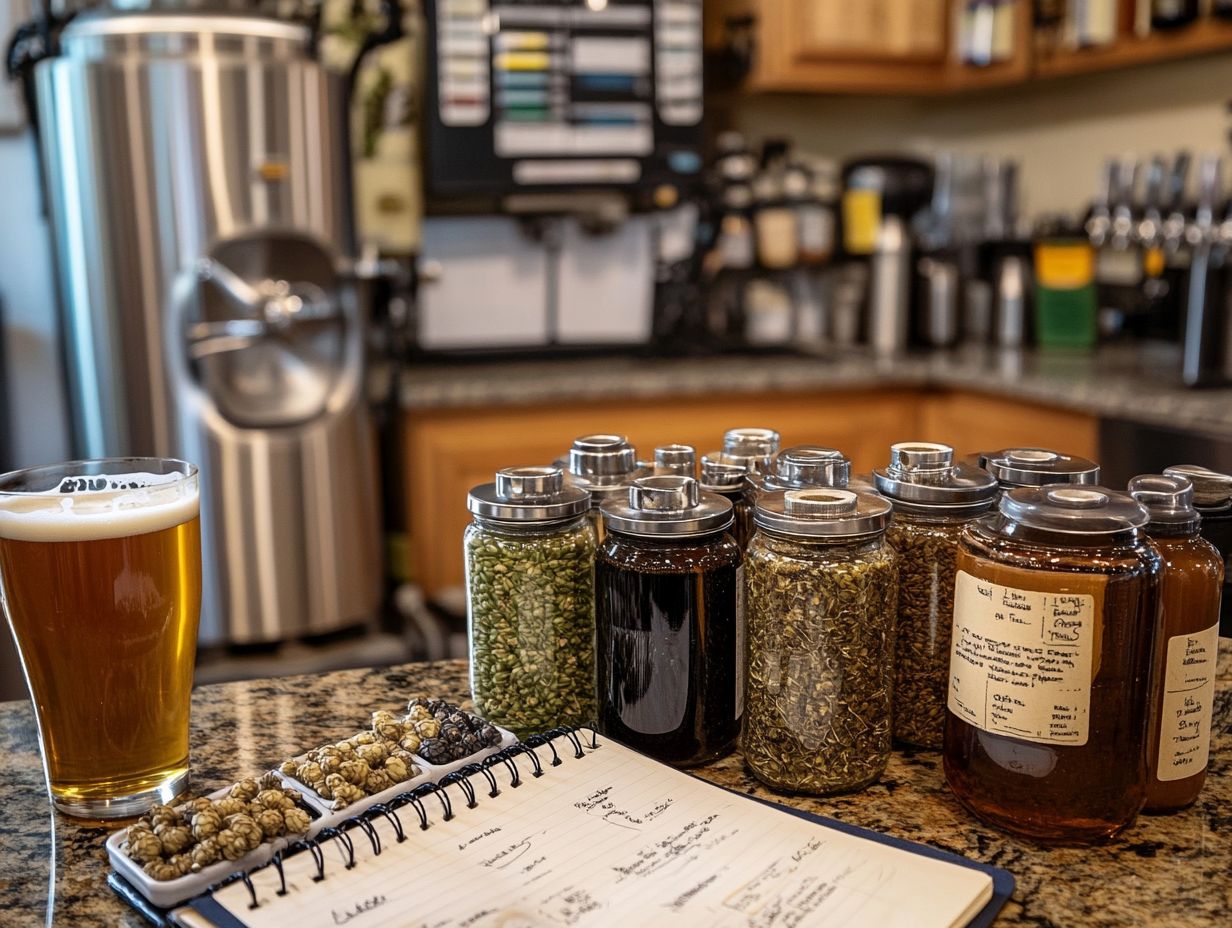
In the world of beer making, you’ll find that different types of yeast strains fall primarily into two categories: ale and lager yeasts. Each offers its own unique flavors and aromas, significantly shaping the brewing styles you can achieve.
According to the Beer Judge Certification Program (BJCP), these yeast categories are foundational to many recognized beer styles. Ale yeasts, which prefer warmer fermentation temperatures, produce fruity and complex flavor profiles. In contrast, lager yeasts thrive in cooler conditions, resulting in clean and crisp beers.
This distinction underscores the crucial role of yeast management in attaining your desired beer attributes. Among the vast array of yeast strains, American ale yeast stands out for its versatility. It often imparts delightful notes of citrus and pine, making it a go-to choice for many craft brewers, including those crafting IPA or Double IPA.
On the other hand, if you delve into Belgian yeast strains, you’ll discover their celebrated spiciness and estery aromas, which bring a fruity character that defines numerous traditional Belgian styles such as Hefeweizen and Blonde.
Regarding lagers, the renowned Saaz yeast strain is known for its subtle earthy and herbal qualities, enhancing pale lagers and pilsners to ensure a refreshing finish. By understanding how these specific strains interact with malt and hops, you’ll be able to craft beers with distinct palettes.
Brands like White Labs and Wyeast offer a multitude of yeast options that can further expand your brewing horizons.
What Factors Should You Consider When Choosing Yeast for Your Beer Recipe and Brewing Techniques?
When you re choosing yeast for your beer recipe, several critical factors deserve your attention. These include the fermentation characteristics you re aiming for, the bitterness levels of the beer, and the overall flavor profiles you wish to create.
Having a firm grasp on how different yeast strains interact with various ingredients can greatly influence both your brewing efficiency and the complexity of the final product. Utilizing brewing software to track these interactions can provide valuable insights into your brewing techniques and outcomes.
Temperature is another key player in the yeast game. Higher temperatures might speed up fermentation, but they can also introduce off-flavors that you definitely want to avoid. The nutrient requirements of yeast can vary significantly, so ensuring an adequate supply of nitrogen and essential minerals is essential for a thriving fermentation process.
Don t overlook the interaction between malts and hops, either. Certain yeast strains can either enhance or mute specific flavor notes, which is crucial for achieving your desired taste.
For you as a brewer, selecting a yeast that harmonizes with these elements not only elevates your beer’s flavor but also paves the way for a smoother brewing experience. Consider taking the plunge and experimenting with different yeast varieties!
You ll be amazed at how each yeast variety transforms your wort (the liquid extracted from the malted grains) into a distinctive beer! Refer to brewing trends and guides like the Beer Styles Guide to make informed decisions in your brewing adventures.
Don’t miss out on the chance to elevate your brewing game!
How to Adjust Your Beer Recipe for Different Yeasts and Yeast Management?
Adjusting your beer recipe for different yeast strains is crucial for optimizing your brewing process and achieving the flavor attributes and aromas you desire. Each yeast strain brings its own personality to the table, often requiring unique recipe adjustments. Beer kits can be a convenient way to explore these variations more easily.
This may involve fine-tuning the way you ferment your beer. You might also need to modify your malt bill to suit the specific behaviors of each yeast. Additionally, tweaking the original gravity and bitterness levels can elevate the final characteristics of your beer.
Key Adjustments for Different Yeast Strains
When you re experimenting with different yeast strains, it s crucial to make specific adjustments to your recipe, especially regarding fermentation temperature and malt flavors. These factors can significantly influence the final outcome. For example, ale yeast strains thrive at warmer fermentation temperatures, while lager yeasts prefer cooler conditions. This prompts you to tweak both your brewing techniques and the bitterness levels of the beer.
The choice of malt also plays a pivotal role in the flavors that develop during fermentation. Different yeast types interact uniquely with specific malt profiles, either enhancing or softening certain flavors. Take, for instance, a malt rich in caramel notes; it can beautifully complement the fruity esters produced by some ale yeasts, leading to a more intricate flavor profile. On the other hand, a clean fermenting lager yeast allows the more subtle malt characteristics to take center stage, resulting in a crisp and refreshing beer. Companies like Fermentis and Lallemand offer specialized yeast strains tailored for these exact purposes.
Understanding these relationships helps you craft the taste you want and significantly impacts the beer’s mouthfeel and aroma. This underscores the essential role yeast plays in the brewing process.
How Does the Type of Yeast Affect the Flavor and Aroma of Beer?
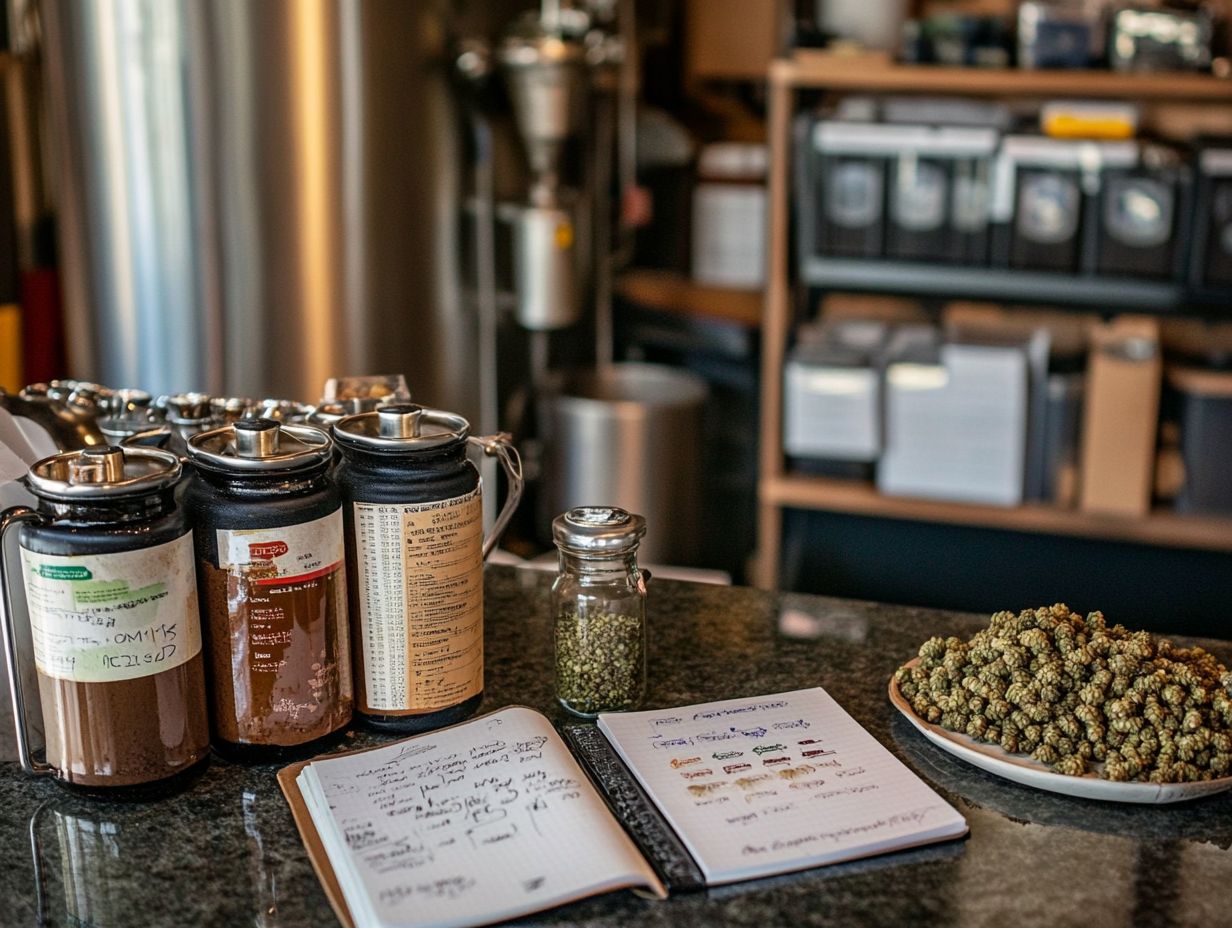
The type of yeast you choose for brewing can profoundly influence the flavor and aroma of your beer. Each yeast strain carries unique characteristics that can enhance or transform your desired profile. For instance, certain yeast strains are renowned for imparting specific esters and phenols, shaping the overall flavor and aroma. This opens exciting doors for you to experiment and discover.
Take the American Ale strain, for example. It s celebrated for its clean fermentation and subtle fruity notes, typically contributing to the crisp profiles found in many pale ales and IPAs. On the flip side, Belgian yeast strains often produce bold esters and spiciness, adding a layer of complexity and depth to styles like the classic Belgian Dubbel or Tripel. Then there’s the Hefeweizen strain, famous for its distinctive banana and clove aromas, perfectly highlighting the characteristics of wheat beers.
By carefully selecting the right yeast strain, you can effectively shape the sensory experience of your brews and create unique beers that appeal to a wide range of palates.
Tips for Successfully Adjusting Beer Recipes for Different Yeasts
Successfully adjusting beer recipes for various yeasts demands careful consideration and a spirit of experimentation. Focus on yeast management, fermentation characteristics, and the distinct flavor attributes you aim to highlight in your brew.
- Document your brewing experiments to enable data-driven adjustments that enhance the uniqueness of your beer.
- Ensure consistent results every time by tracking your brewing processes and outcomes.
Encourage yourself to try experimenting with different yeast strains in your next brew for a hands-on experience.
What Are Some Common Mistakes to Avoid When Adjusting Beer Recipes for Different Yeasts?
When you adjust beer recipes for different yeasts, you may encounter some common mistakes that can derail your brewing efforts and compromise the final product’s quality. Key pitfalls include overlooking changes in fermentation temperature, mishandling yeast health, and neglecting to modify original gravity and bitterness levels. These oversights can ultimately affect your brewing efficiency and the overall fermentation process.
To navigate these challenges successfully, a wise strategy is to thoroughly research the specific yeast strain you are using, as each strain comes with its own temperature preferences and how well the yeast ferments sugars. Ensuring proper yeast production methods like creating a starter or monitoring viability can greatly enhance your fermentation results.
It’s also essential to regularly check the original gravity. Make necessary adjustments to the bitterness scale to align with the new yeast’s unique characteristics. By keeping detailed notes throughout your brewing journey, you’ll gain a deeper understanding of how each variable interacts, allowing you to refine your techniques for future batches with confidence.
How Can You Experiment with Different Yeasts to Create Unique Beer Recipes?
Experimenting with different yeast strains is an exceptional way for you to craft unique beer recipes that truly stand out. This allows you to explore a diverse array of flavor profiles and aromas. By carefully selecting your yeast strains and fine-tuning your brewing techniques, you can embark on thrilling brewing experiments that yield exciting, unconventional results while challenging the norms of traditional beer styles.
Embark on a thrilling journey into fermentation, where creativity knows no bounds. Consider pairing unconventional yeast varieties to produce innovative hybrids. Imagine the possibilities with baffling combinations, like sour or wild yeast strains mixed with classic ale yeasts, unlocking unexpected flavors that surprise and delight the palate.
Keep detailed notes as they will help you track each experiment. As you push the boundaries of your brewing creativity, don t hesitate to share your discoveries with fellow enthusiasts. This cultivates a vibrant community of innovative brewers eager to learn and grow together.
Frequently Asked Questions
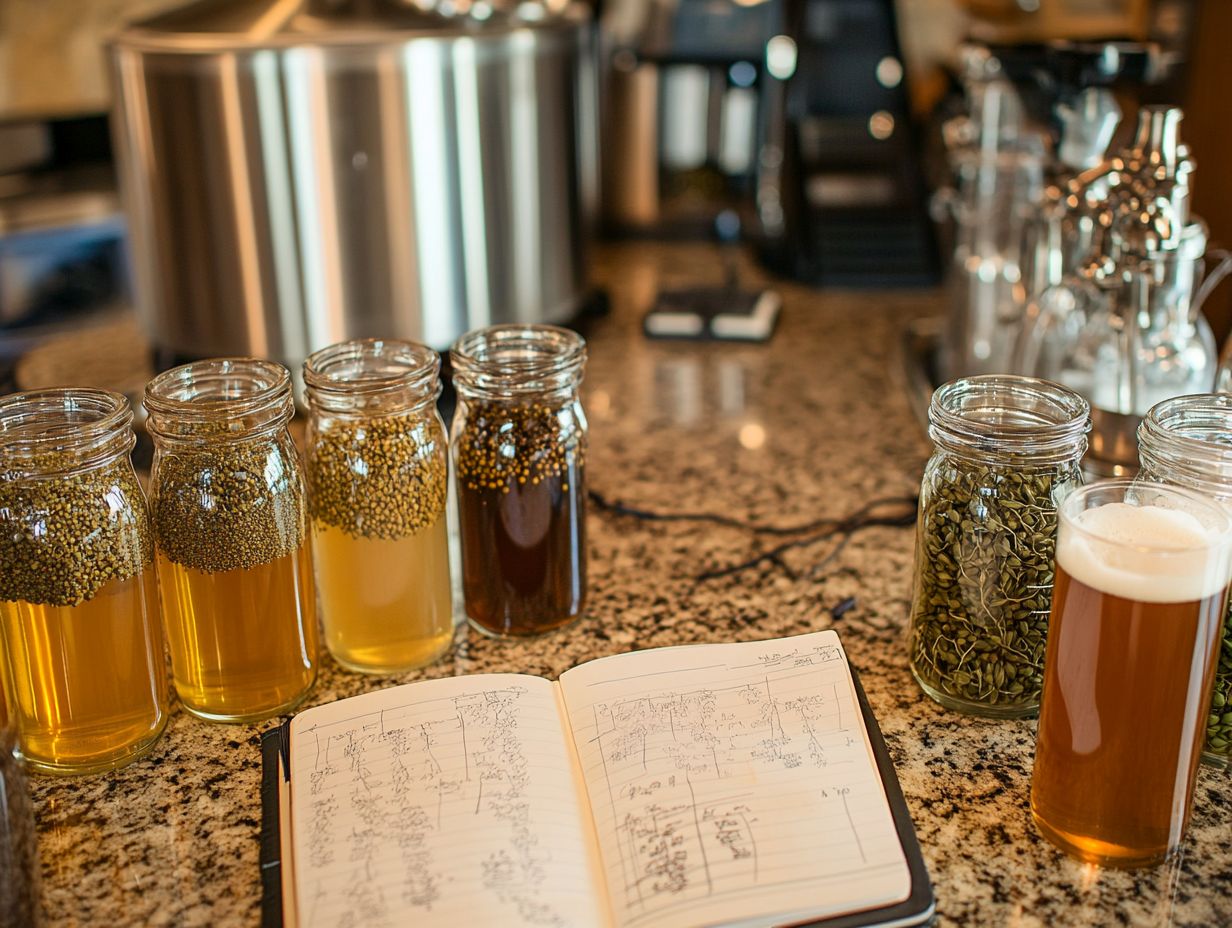
What is the importance of adjusting beer recipes for different yeasts?
Different yeasts can greatly impact the flavor, aroma, and overall character of a beer. Adjusting the recipe to accommodate different yeasts ensures a desired outcome and allows for experimentation with various yeast strains.
How do I know when to adjust a beer recipe for a specific yeast?
It is important to understand the characteristics of the yeast strain you are using and how it will interact with the ingredients in your recipe. If you want to achieve a specific flavor or aroma profile, adjusting the recipe for the chosen yeast is necessary.
Can I use any type of yeast for any beer recipe?
While some yeasts can be versatile and used in a variety of beer styles, it is generally recommended to use a yeast strain that is appropriate for the style of beer you are brewing. This will allow for better flavor development and a more authentic representation of the style.
How do I adjust a recipe for a yeast with different fermentation characteristics?
When using a yeast with different fermentation characteristics, such as a higher or lower attenuation rate, it is important to adjust the amount of fermentable sugars in the recipe. This can be done by adding or subtracting sugars or adjusting the mash temperature.
Can I adjust a beer recipe for a wild yeast or bacteria strain?
Yes, you can adjust a recipe for a wild yeast or bacteria strain, but it requires a different approach. These strains may not have the same fermentation characteristics as traditional brewing yeasts, so adjustments may need to be made to the amount and type of sugars used, as well as the fermentation temperature and time.
Is there a general rule for adjusting beer recipes for different yeasts?
Understanding Yeast Adjustments in Beer Recipes
There is no one-size-fits-all rule for adjusting beer recipes for different yeasts. Researching and understanding the characteristics of the yeast strain you are using is crucial.
This knowledge will help you see how it interacts with the ingredients in your recipe. Adjustments may be necessary to achieve your desired outcome.
Experiment with different strains to discover exciting flavors and aromas in your brews!

